MAKING
EVIDENCE-BASED CLAIMS
DEVELOPING CORE LITERACY
PROFICIENCIES
GRADE 6
Literacy Toolbox

WRITING EVIDENCE-BASED CLAIMS
Writing evidence-based claims is a little different from writing stories or just writing about something. You need to follow a few steps as you write.
| 1. ESTABLISH THE CONTEXT |
| Your readers must know where your claim is coming from and why it’s important. Depending on the scope of your piece and the claim, the context differs. If your whole piece is one claim or if you’re introducing the first major claim of your piece, the entire context must be given:
Purposes of evidence-based writing vary. In some cases, naming the article and author is enough to show why your claim is important. In other cases, you might want to give more information:
If your claim is part of a larger piece with multiple claims, then the context might be simpler:
|
| 2. STATE YOUR CLAIM CLEARLY |
| How you state your claim is important; it must clearly and fully express your ideas. Figuring out how to state claims is a process. Writers revise them continually as they write their supporting evidence. Here’s a claim about Jobs’ speech:
Remember, you should continually return and rephrase your claim as you write the supporting evidence to make sure you are capturing exactly what you want to say. Writing out the evidence always helps you figure out what you really think. |
| 3. ORGANIZE YOUR SUPPORTING EVIDENCE |
Most claims contain multiple parts that require different evidence and should be expressed in separate paragraphs. This claim can be broken down into two parts:
Here are two paragraphs that support the claim with evidence organized into these two parts. A description of how Having cancer caused Jobs to face death:
A description of the Jobs thinks death should shape how people live:
Notice the phrase, “In paragraph 20, Jobs introduces his message” starting the second paragraph. Transitional phrases like such as this one aid the organization by showing how the ideas relate to each other. |
| 4. PARAPHRASE AND QUOTE |
Written evidence from texts can be paraphrased or quoted. It’s up to the writer to decide which works better for each piece of evidence. Paraphrasing is putting the author’s words into your own. This works well when the author originally expresses the idea you want to include across many sentences. You might write it more briefly. The second line from the first paragraph paraphrases the evidence from Jobs’s text. The ideas are his, but the exact way of writing is not.
Some evidence is better quoted than paraphrased. If an author has found the quickest way to phrase the idea or the words are especially strong, you might want to use the author’s words. The third line from paragraph 2 quotes Jobs exactly, incorporating his powerful phrases.
|
| 5. REFERENCE YOUR EVIDENCE |
| Whether you paraphrase or quote the author’s words, you must include the exact location where the ideas come from. Direct quotes are written in quotation marks. How writers include the reference can vary depending on the piece and the original text. Here the writer puts the paragraph numbers from the original text in parentheses at the end of the sentence. |
MAKING EVIDENCE-BASED CLAIMS FINAL WRITING TASKS
In this unit, you have been developing your skills as a reader who can make text-based claims and prove them with evidence from the text. You have learned to do the following things:
Your final two writing assignments will provide you with opportunities to use all of these related skills and to demonstrate your proficiency and growth in Making Evidence-Based Claims. |
| FINAL ASSIGNMENTS |
|
| SKILLS TO BE DEMONSTRATED |
| As you become a text expert and write your evidence-based claims, think about demonstrating the Literacy Skills you have been working on to the best of your ability. Your teacher will evaluate your work and determine your grade based on how well you are able to do the following things: Read
Think
Write
|
| HABITS TO BE DEVELOPED |
Your teacher may also want you to reflect on how well you have used and developed the following habits of text-centered discussion when you worked with others to understand the texts and improve your writing:
Note: These skills and habits are also listed on the Student Literacy Skills and Academic Habits Checklists, which you can use to assess your work and the work of other students. |
QUESTIONING PATH TOOL
Steve Jobs’s Stanford Commencement Address, paragraphs 1–8
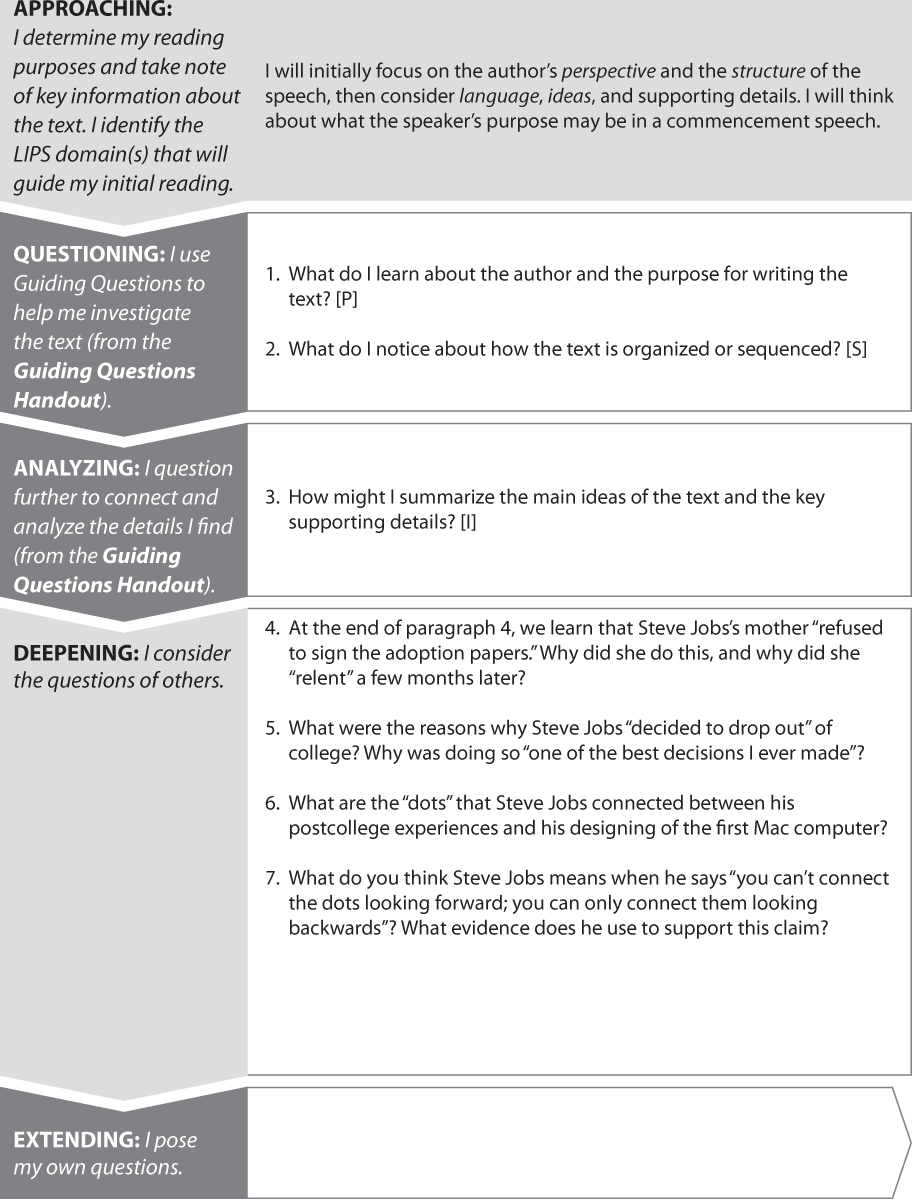
APPROACHING TEXTS TOOL

ANALYZING DETAILS TOOL
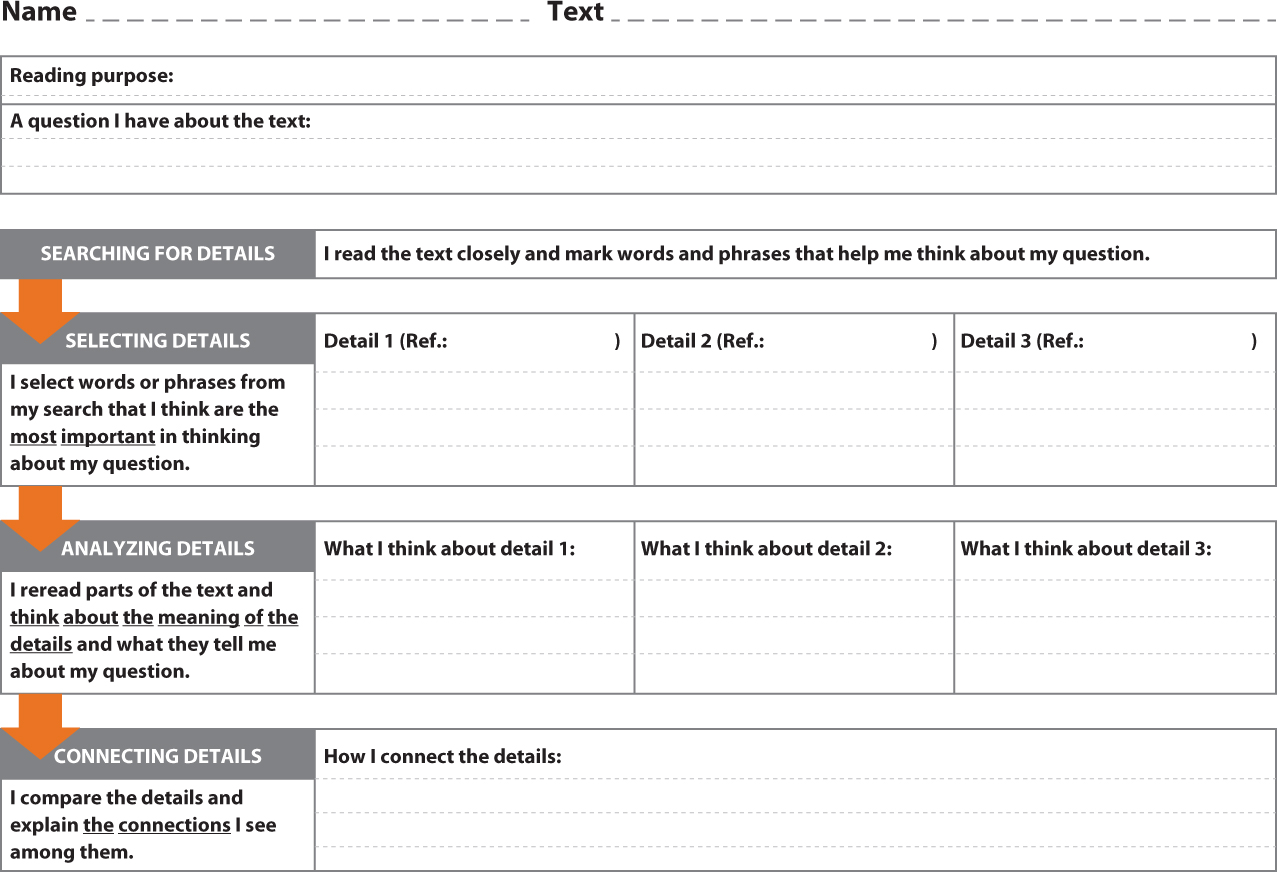
FORMING EVIDENCE-BASED CLAIMS TOOL

SUPPORTING EVIDENCE-BASED CLAIMS TOOL

QUESTIONING PATH TOOL
Steve Jobs’s Stanford Commencement Address, paragraphs 9–14
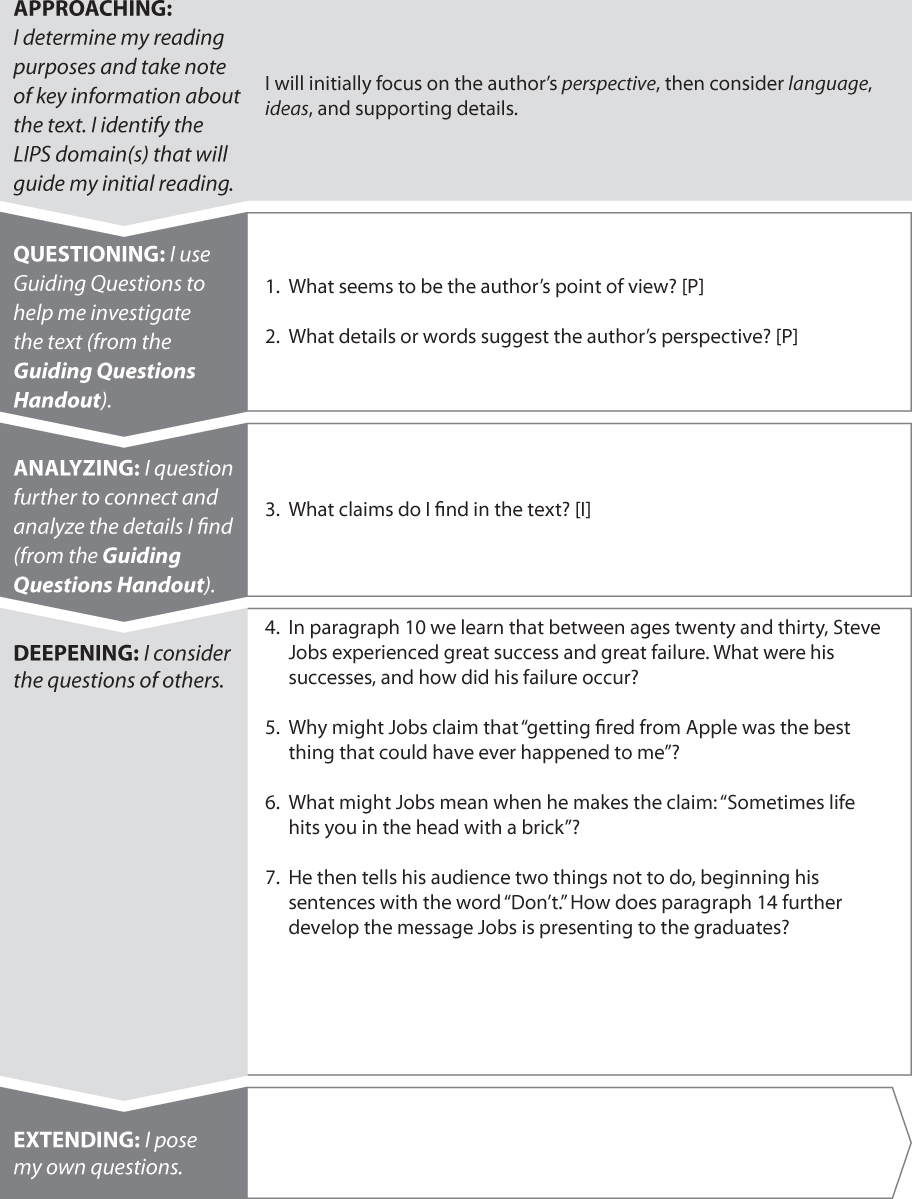
SUPPORTING EVIDENCE-BASED CLAIMS TOOL
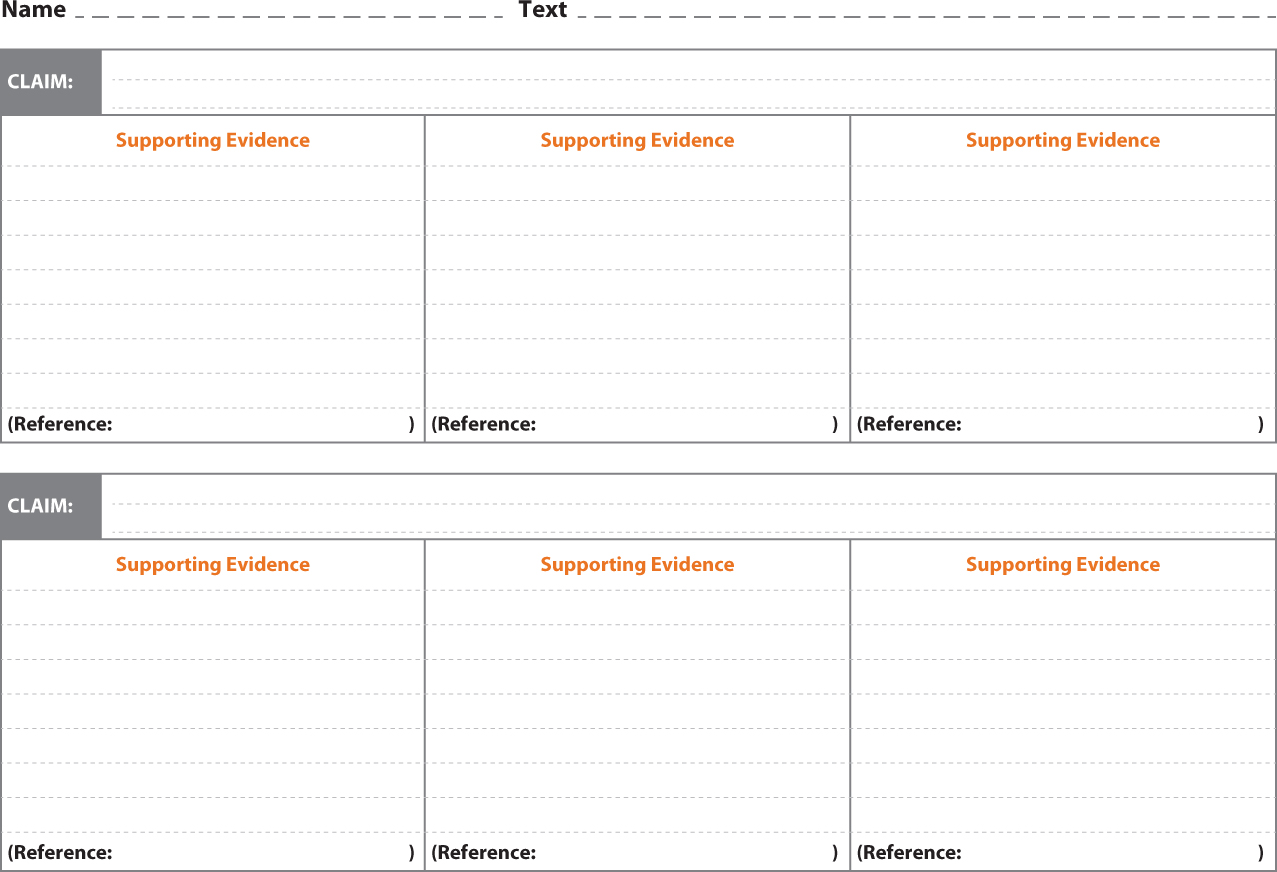
SUPPORTING EVIDENCE-BASED CLAIMS TOOL
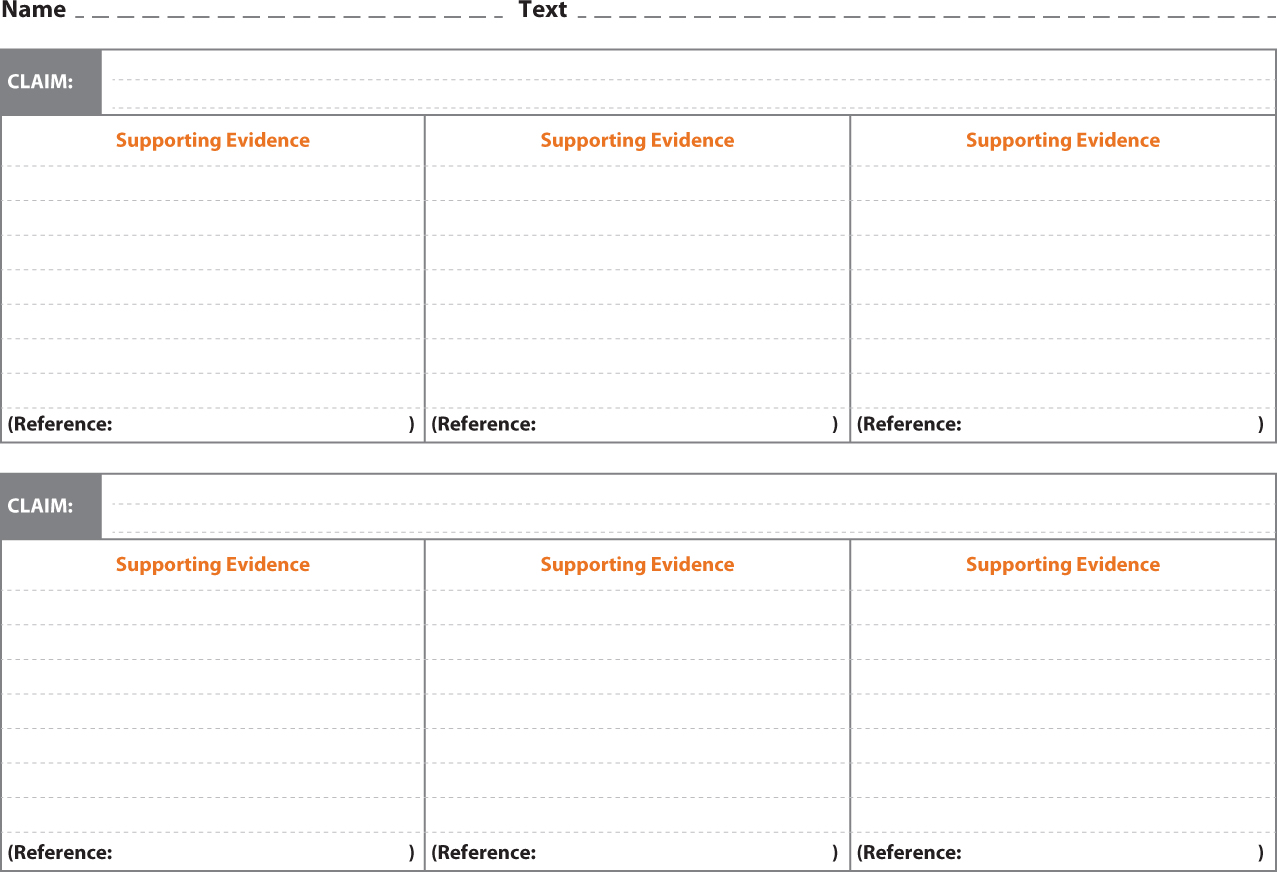
FORMING EVIDENCE-BASED CLAIMS TOOL
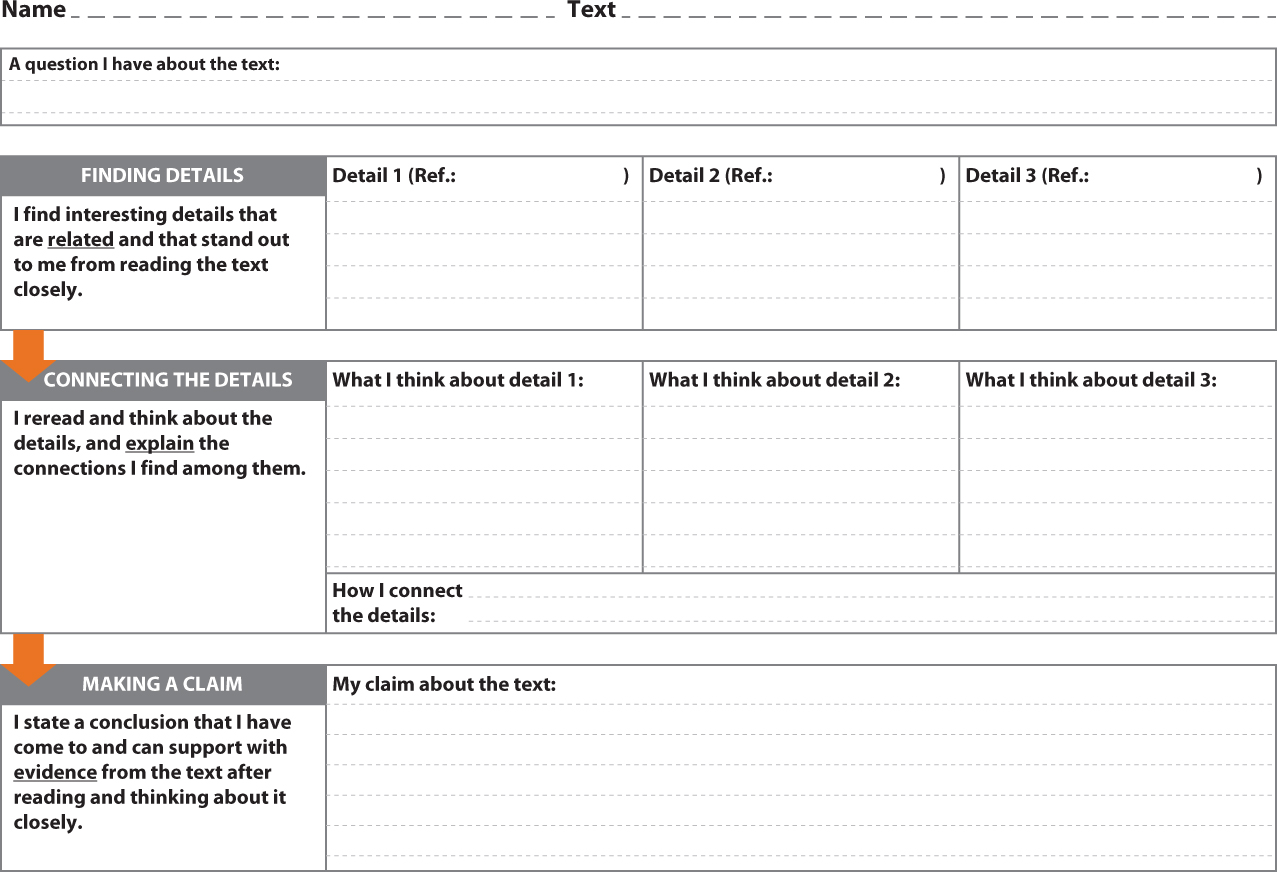
QUESTIONING PATH TOOL
Steve Jobs’s Stanford Commencement Address, paragraphs 15–21

FORMING EVIDENCE-BASED CLAIMS TOOL

ORGANIZING EVIDENCE-BASED CLAIMS TOOL (2 POINTS)
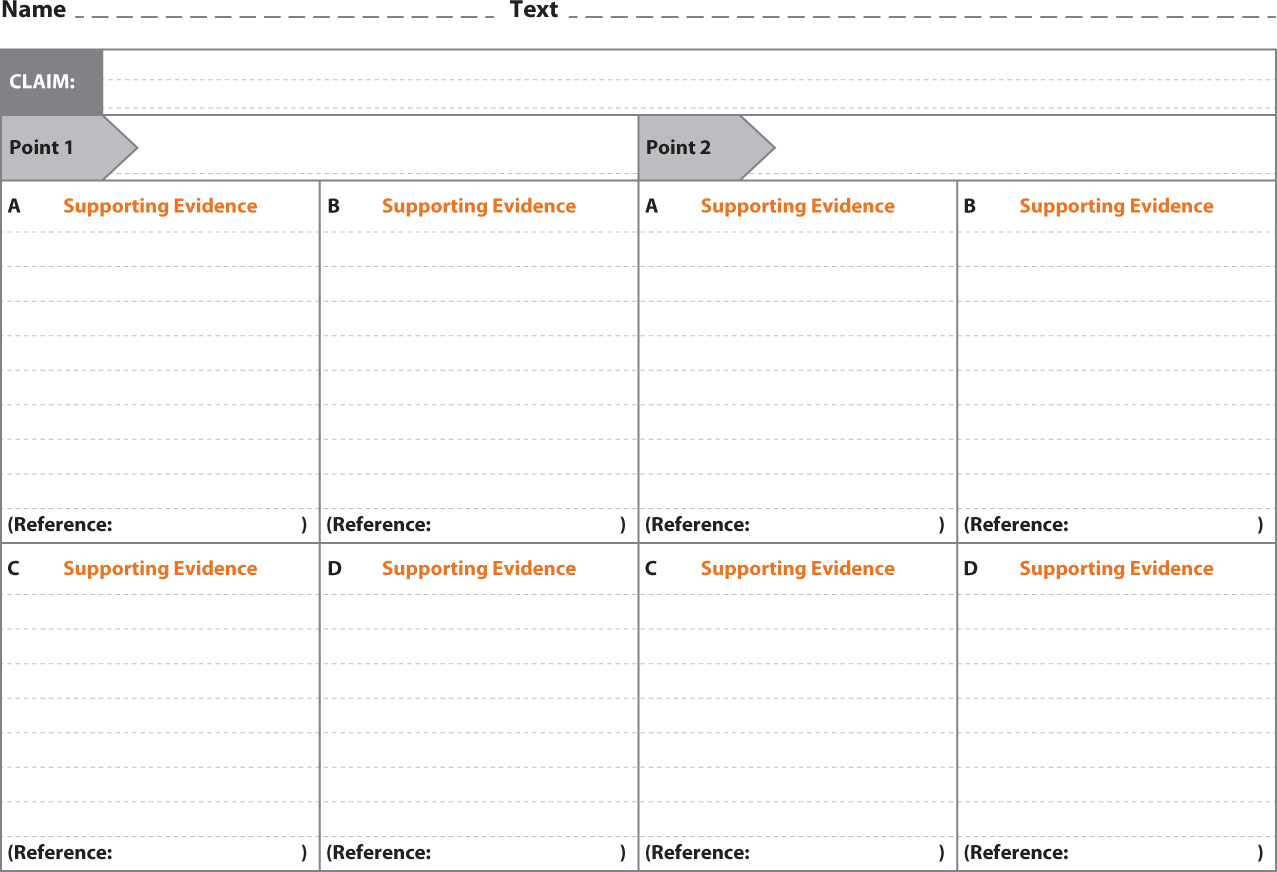
ORGANIZING EVIDENCE-BASED CLAIMS TOOL (3 POINTS)

FORMING EVIDENCE-BASED CLAIMS TOOL
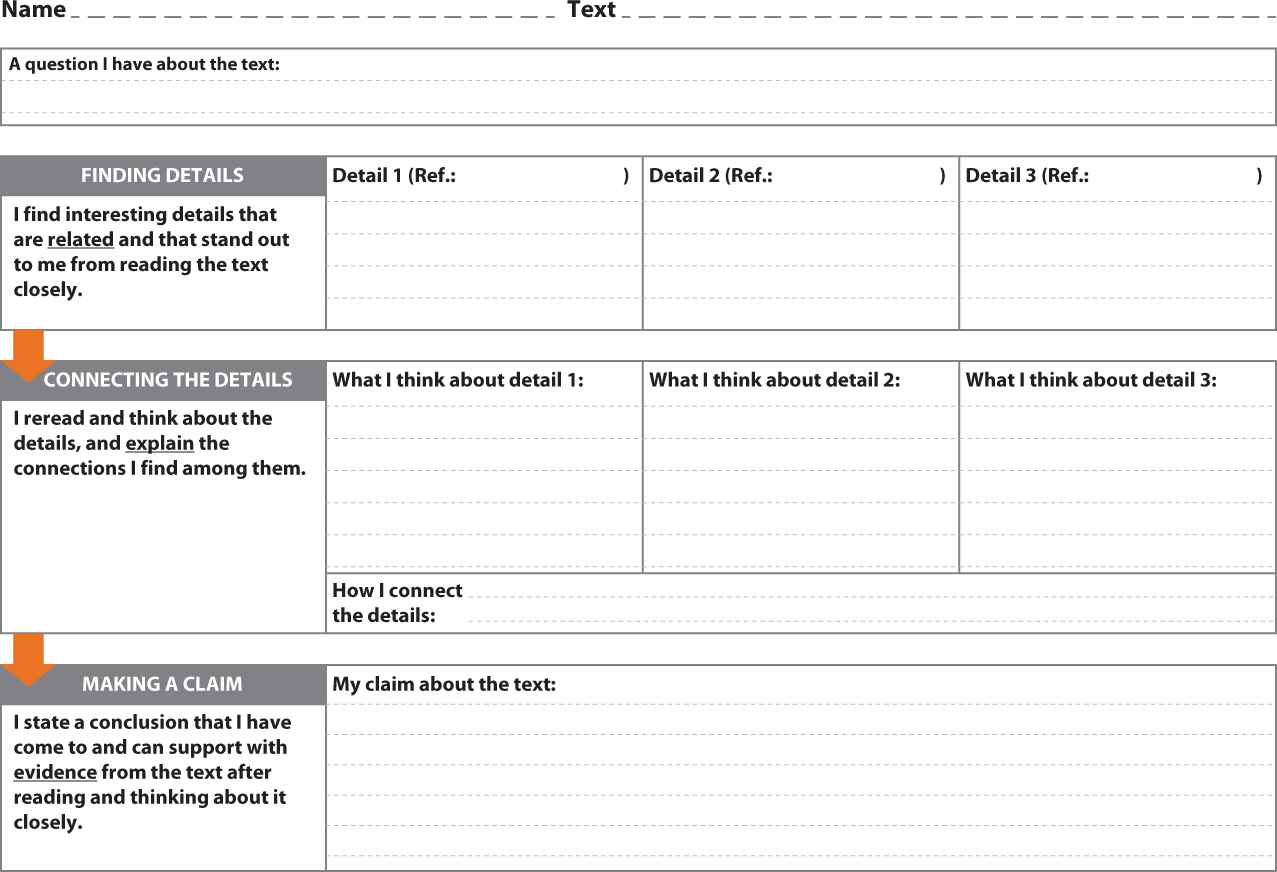
ORGANIZING EVIDENCE-BASED CLAIMS TOOL (2 POINTS)
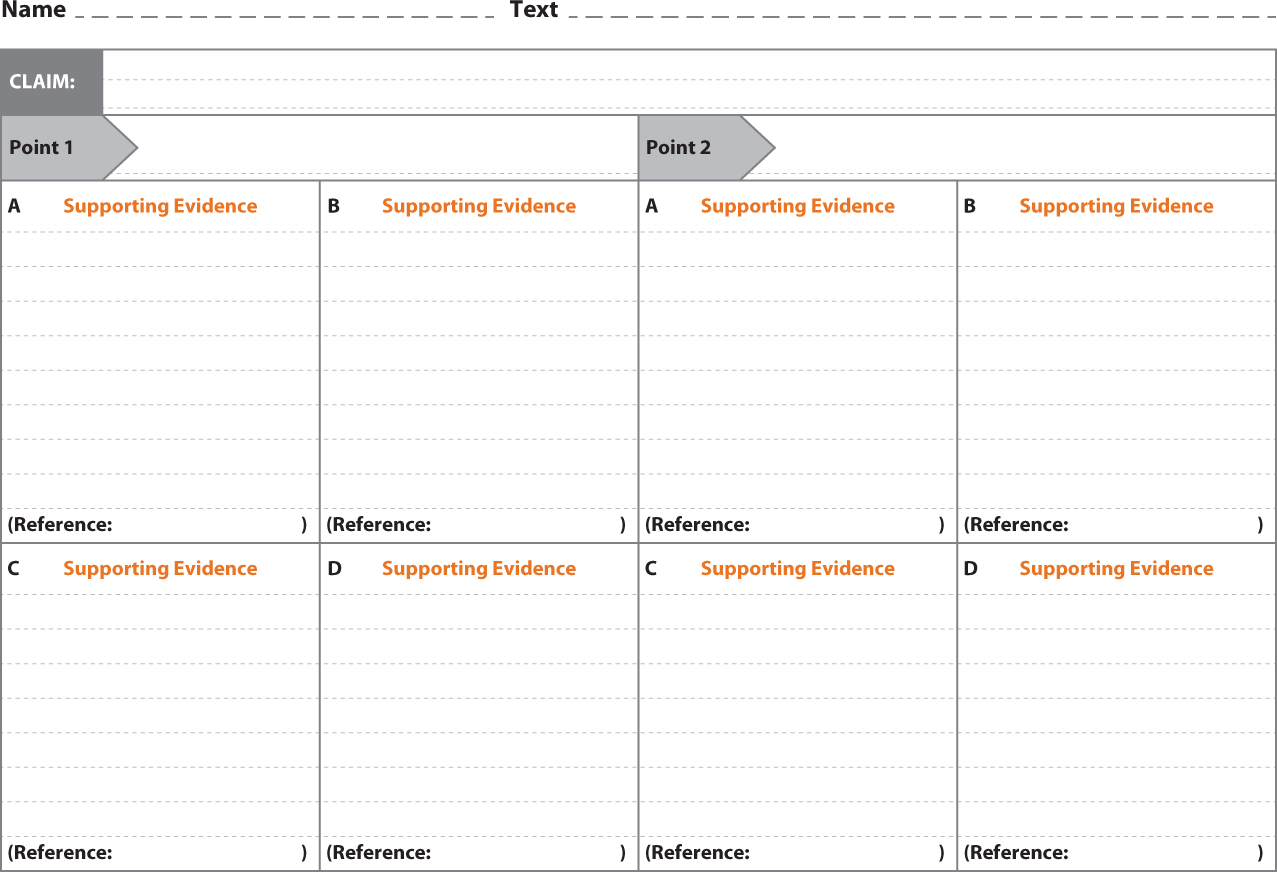
ORGANIZING EVIDENCE-BASED CLAIMS TOOL (3 POINTS)
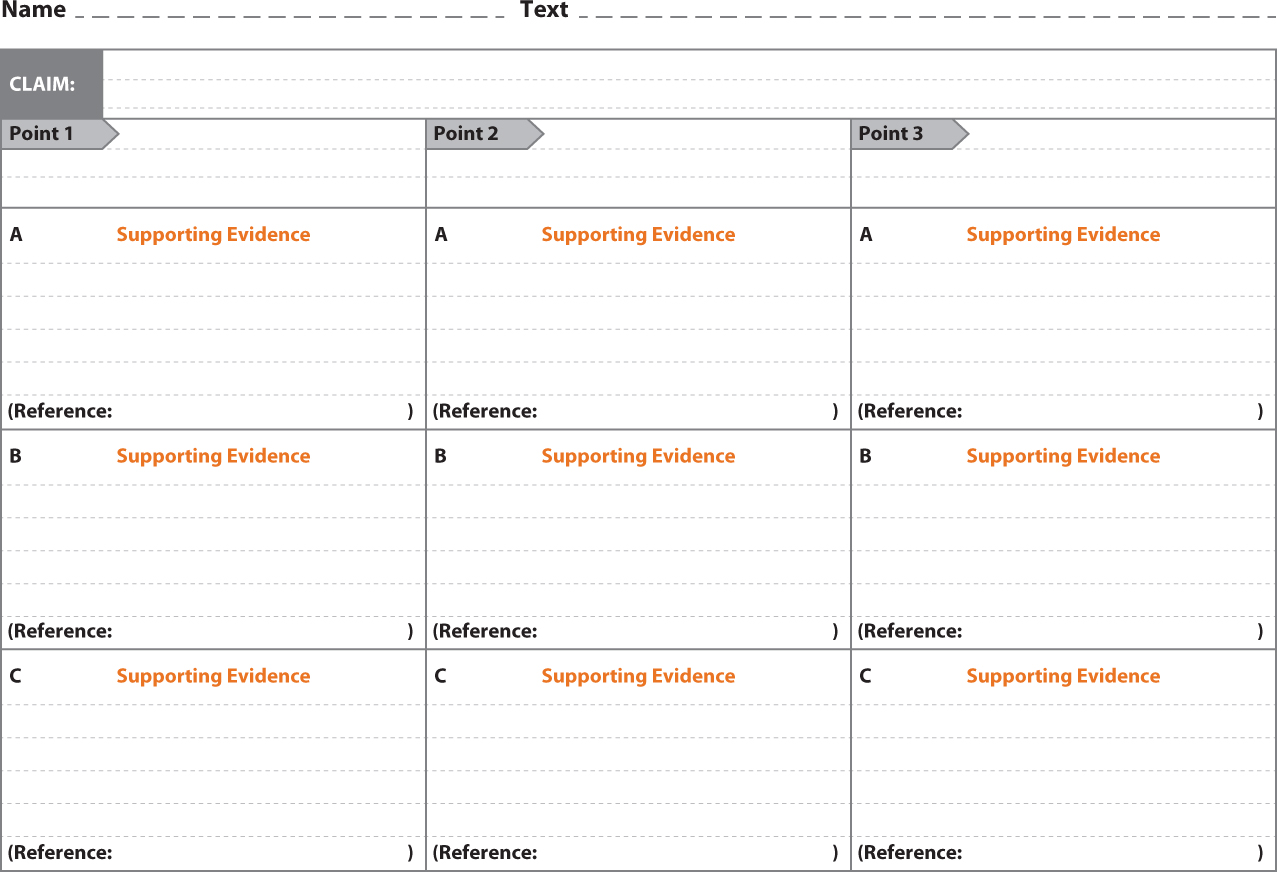
FORMING EVIDENCE-BASED CLAIMS TOOL
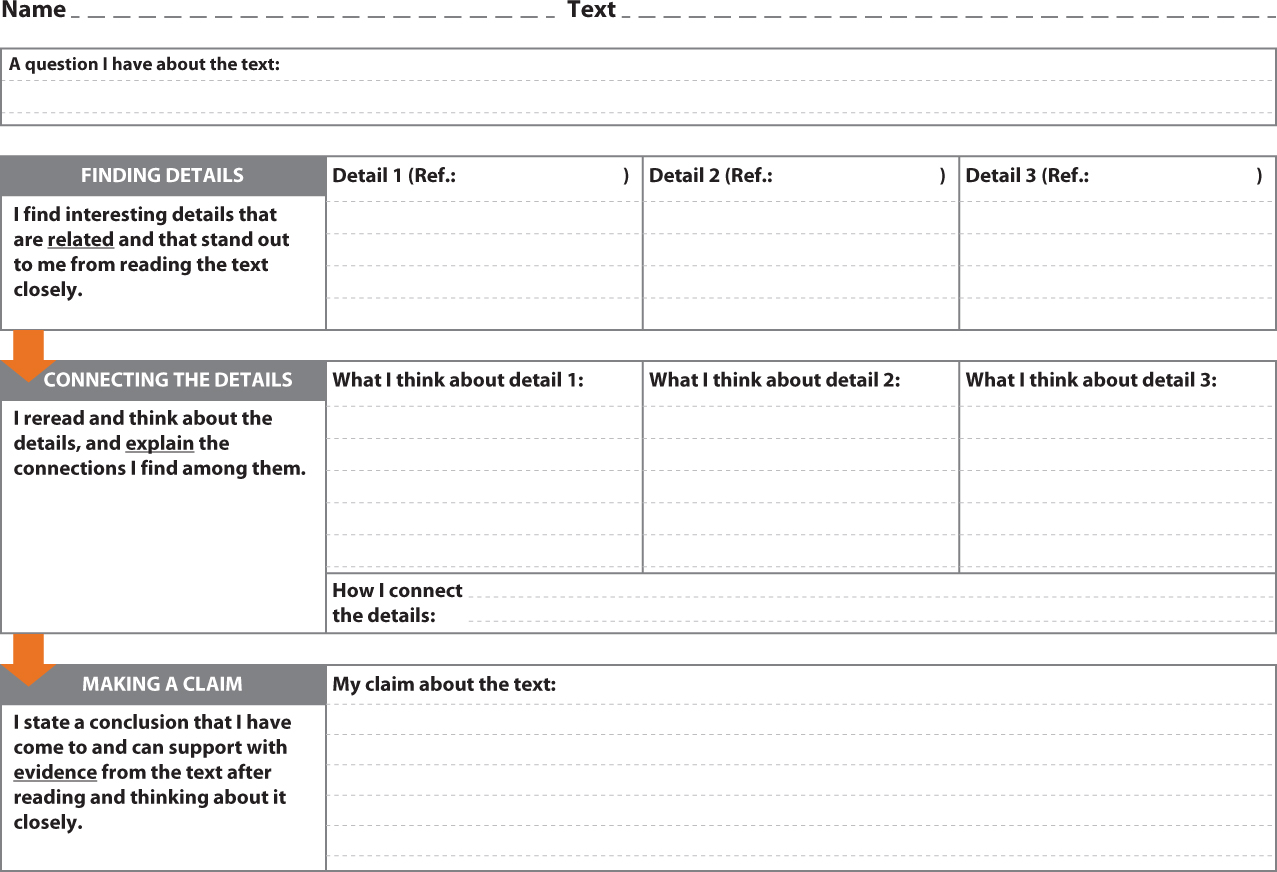
QUESTIONING PATH TOOL
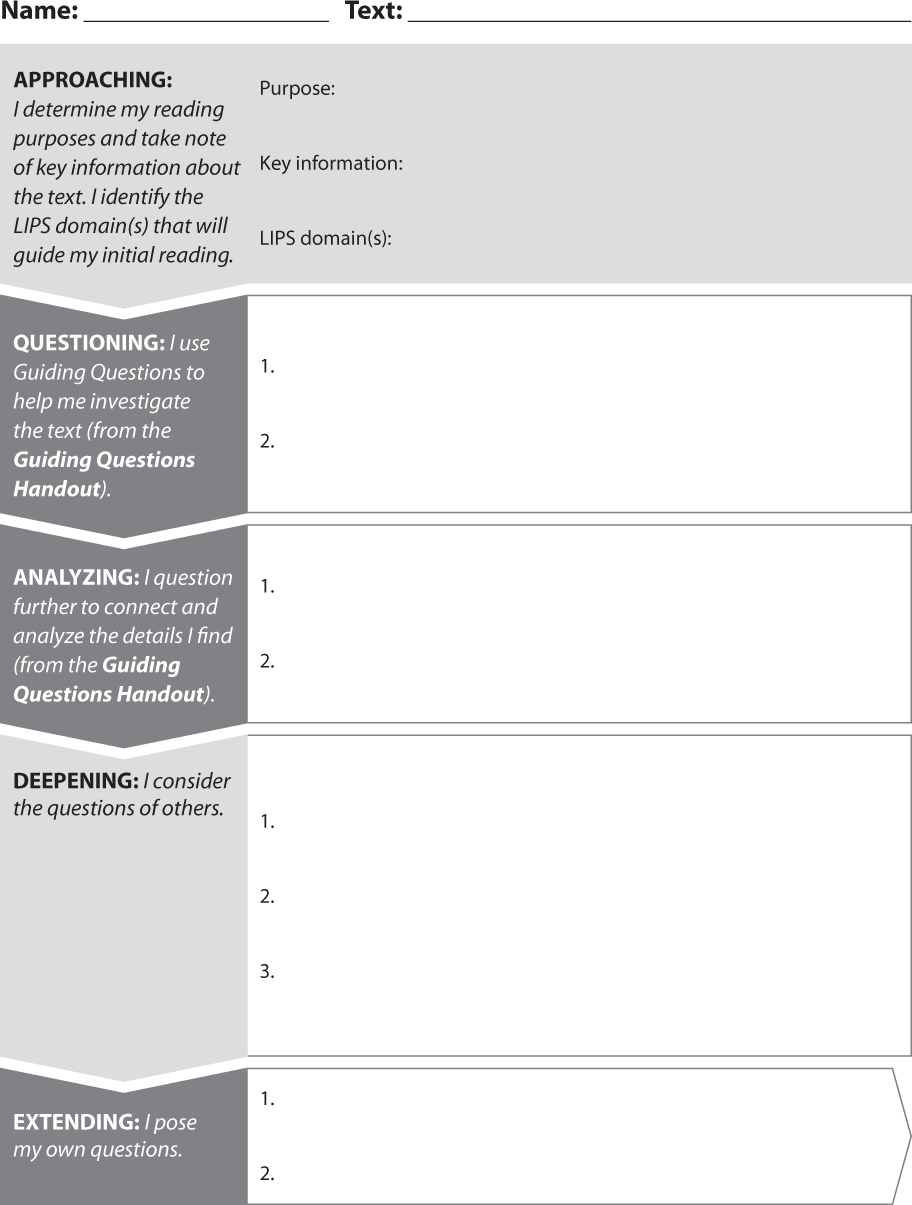
FORMING EVIDENCE-BASED CLAIMS TOOL

ORGANIZING EVIDENCE-BASED CLAIMS TOOL (2 POINTS)
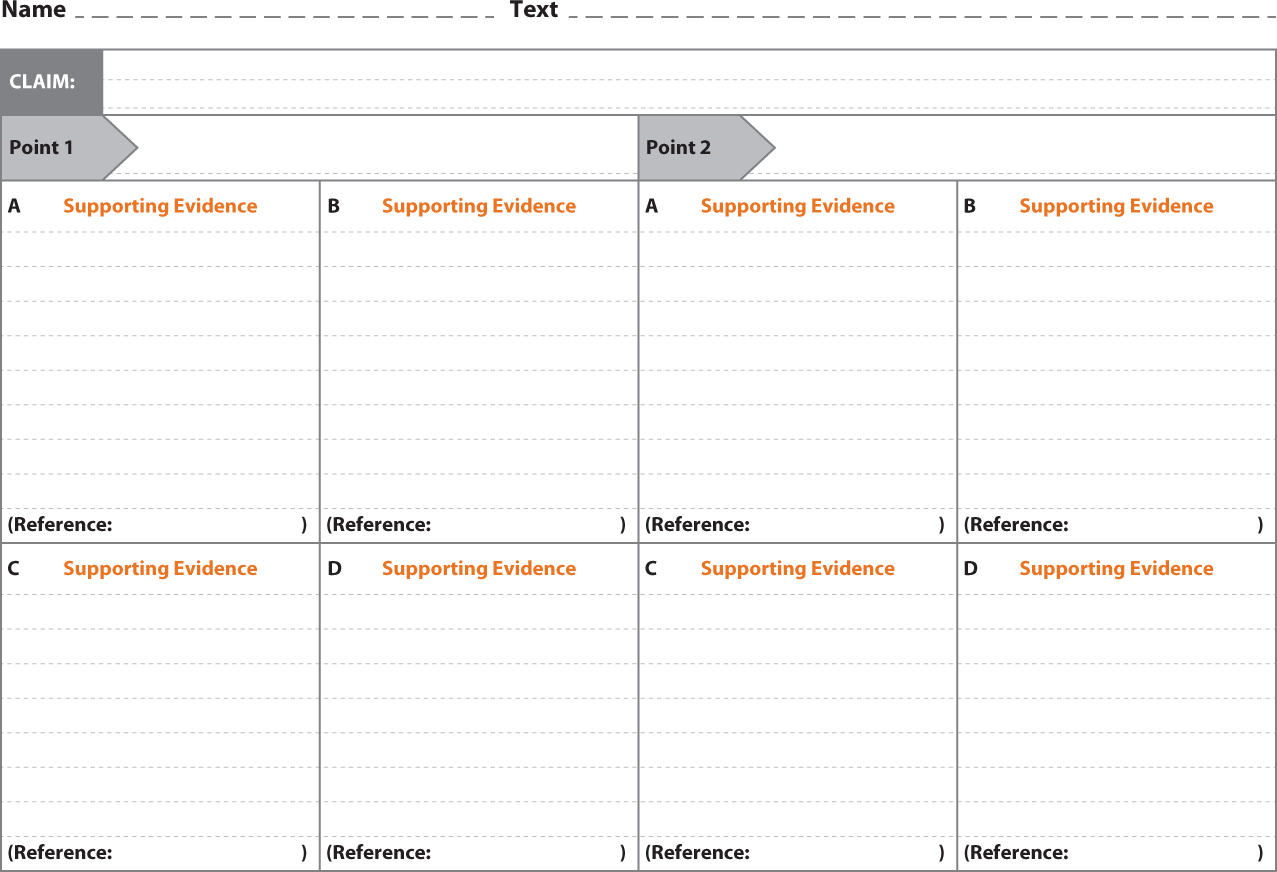
ORGANIZING EVIDENCE-BASED CLAIMS TOOL (3 POINTS)
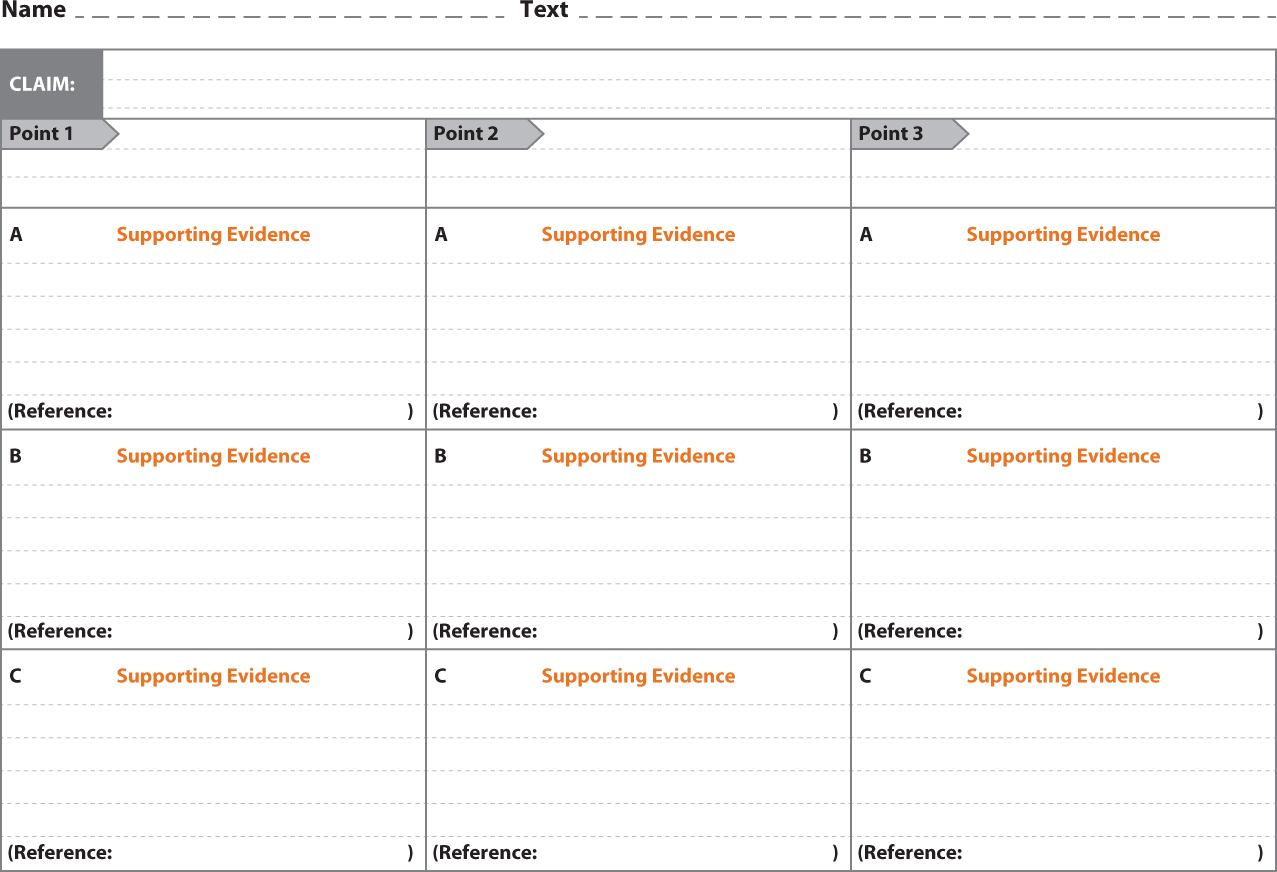
FORMING EVIDENCE-BASED CLAIMS TOOL
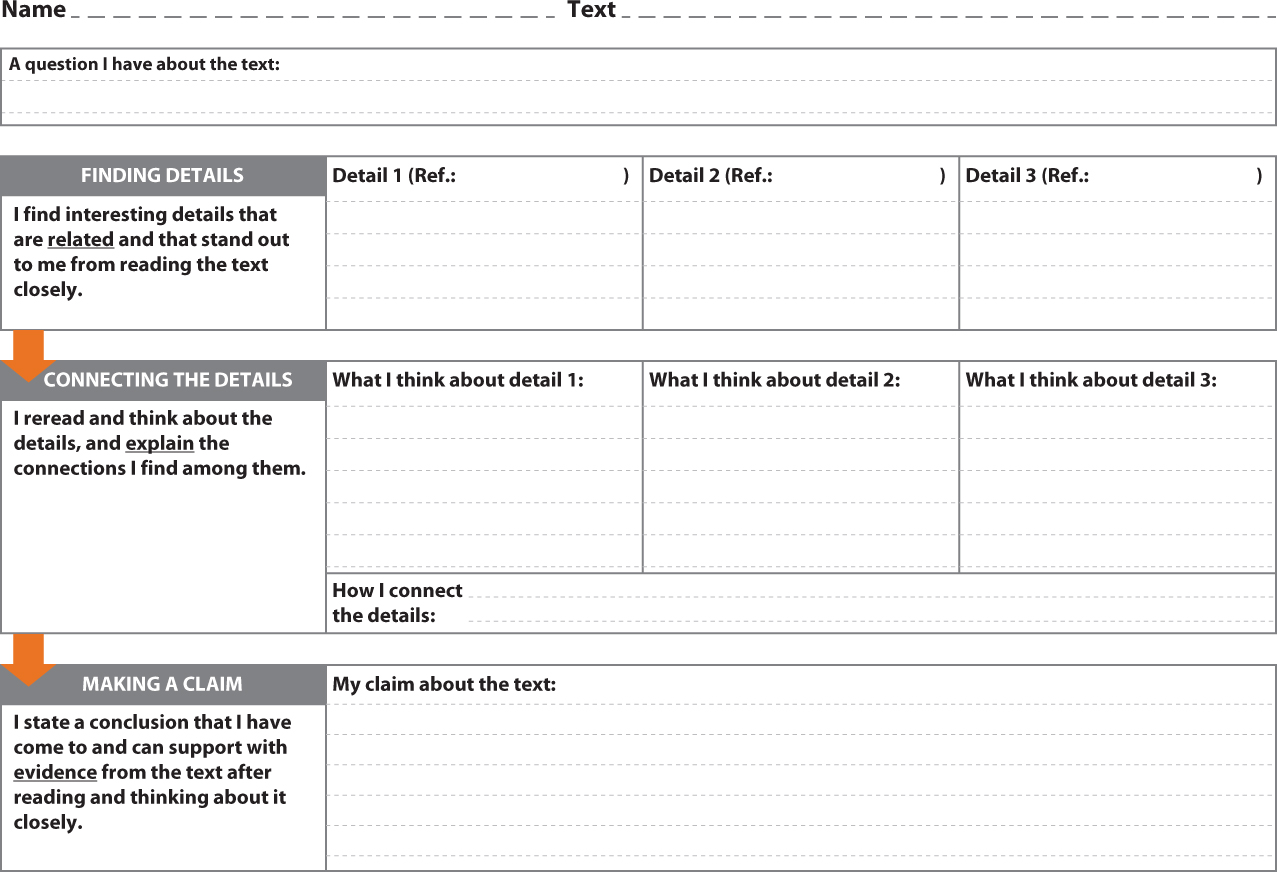
SUPPORTING EVIDENCE-BASED CLAIMS TOOL
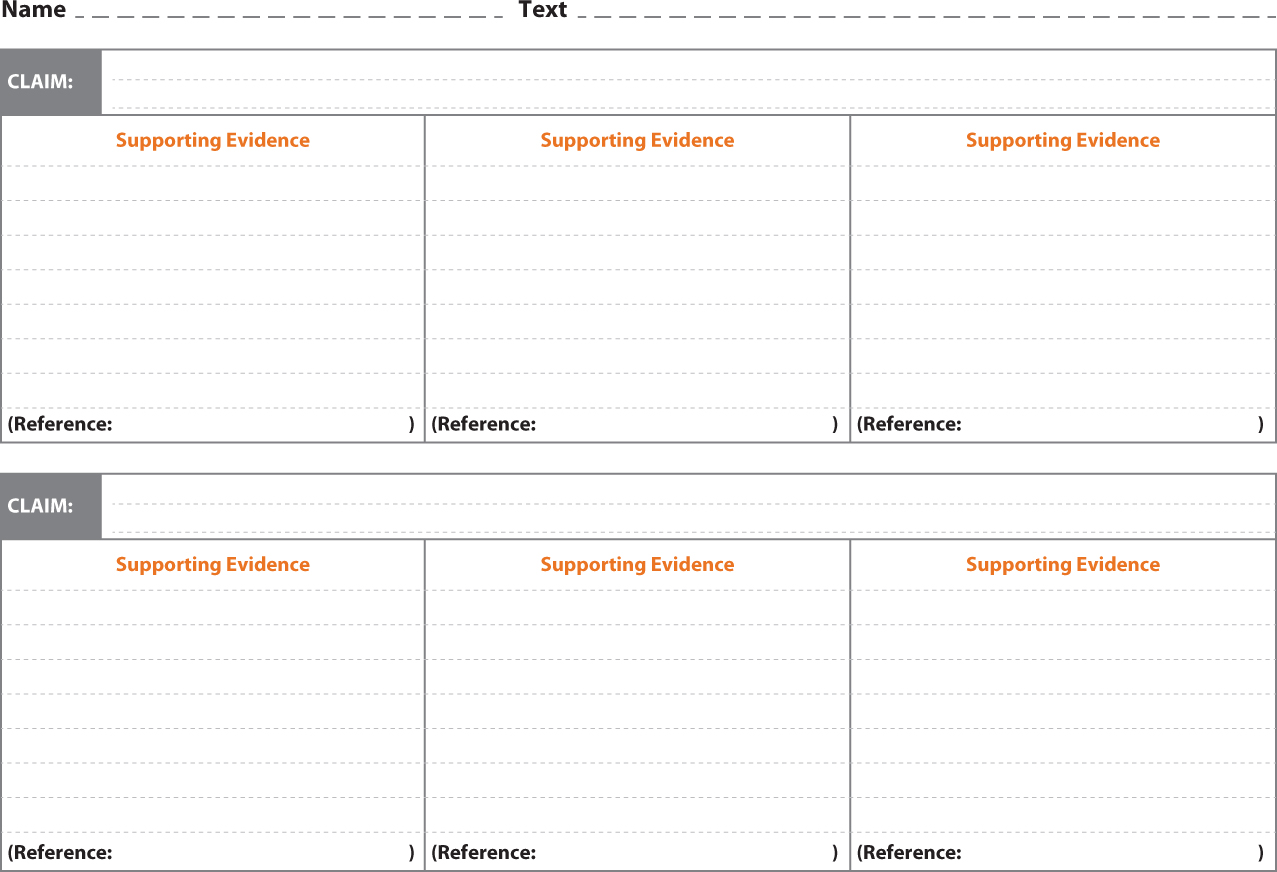
ORGANIZING EVIDENCE-BASED CLAIMS TOOL (2 POINTS)

ORGANIZING EVIDENCE-BASED CLAIMS TOOL (3 POINTS)

PART 3: STUDENT ACADEMIC HABITS CHECKLIST
| HABITS DEVELOPED | DESCRIPTORS | EVIDENCE OF USING THE HABIT | THINGS TO IMPROVE ON |
| COLLABORATING | Pays attention to and respects other participants Works productively with others to complete the task and enrich the discussion |
||
| COMMUNICATING CLEARLY | Uses clear language to communicate ideas and claims Uses relevant details to explain and support thinking |
||
| LISTENING | Pays attention to new information and ideas from others Considers others’ ideas thoughtfully |
PART 4: STUDENT ACADEMIC HABITS CHECKLIST
| HABITS DEVELOPED | DESCRIPTORS | EVIDENCE OF USING THE HABIT | THINGS TO IMPROVE ON |
| UNDERSTANDING PURPOSE AND PROCESS | Understands and uses the collaborative writing workshop process Uses literacy skills criteria to frame questions, responses, and feedback |
||
| LISTENING | Pays attention to new information and ideas from others Considers others’ ideas thoughtfully |
||
| REMAINING OPEN | Avoids explanations or justifications for what they as writers have tried to do Frames text-based questions to probe their readers’ observations |
||
| REVISING | Uses criteria to rethink, refine, or revise work Uses observations from peers to inform improvement |
STUDENT MAKING EVIDENCE-BASED CLAIMS LITERACY SKILLS CHECKLIST
| LITERACY SKILLS USED IN THIS UNIT |  |
EVIDENCE Demonstrating the SKILLS | |
| READING | Attending to Details: Identifies words, details, or quotations that are important to understanding the text | ||
| Interpreting Language: Understands how words are used to express ideas and perspectives | |||
| Identifying Relationships: Notices important connections among details, ideas, or texts | |||
| Recognizing Perspective: Identifies and explains the author’s view of the text’s topic | |||
| THINKING | Making Inferences: Draws sound conclusions from reading and examining the text closely | ||
| Forming Claims: States a meaningful conclusion that is well-supported by evidence from the text | |||
| Using Evidence: Uses well-chosen details from the text to explain and support claims; accurately paraphrases or quotes | |||
| WRITING | Presenting Details: Inserts details and quotations effectively into written or spoken explanations | ||
| Organizing Ideas: Organizes claims, supporting ideas, and evidence in a logical order | |||
| Using Language: Writes and speaks clearly so others can understand claims and ideas | |||
| Using Conventions: Correctly uses sentence elements, punctuation, and spelling to produce clear writing | |||
| Publishing: Correctly uses, formats, and cites textual evidence to support claims | |||
| General comments: |
STUDENT MAKING EVIDENCE-BASED CLAIMS ACADEMIC HABITS CHECKLIST
| Academic Habits Used in This Unit |  |
EVIDENCE Demonstrating the HABITS |
| 1. Engaging Actively: Focuses attention on the task when working individually and with others | ||
| 2. Collaborating: Works respectfully and productively to help a group be successful | ||
| 3. Communicating Clearly: Presents ideas and supporting evidence so others can understand them | ||
| 4. Listening: Pays attention to ideas from others and takes time to think about them | ||
| 5. Understanding Purpose and Process: Understands why and how a task should be accomplished | ||
| 6. Revising: Rethinks ideas and refines work based on feedback from others | ||
| 7. Remaining Open: Modifies and further justifies ideas in response to thinking from others | ||
| General comments: |